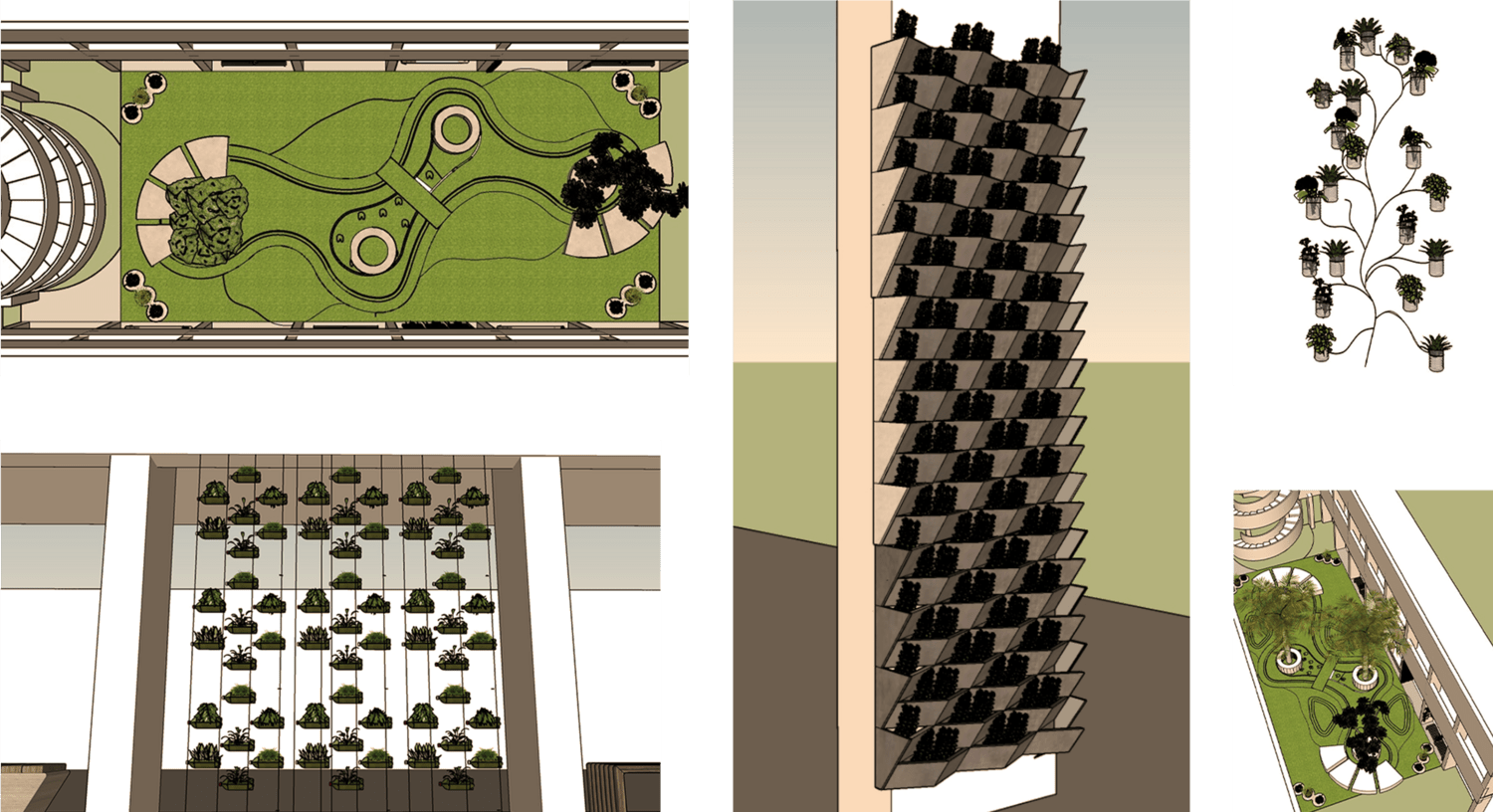Exploring Shapes
Sonobe
We started the class by learning various ways of origami to create shapes, forms, and structures. We learned the basics of Sonobe Modules. The use of different kinds of papers, mixing and matching them to understand their effect on strength and ease of folding. These sonobe’s were modules that could interconnect internally to create another module and could replicate it further.
Tessellation
The basic premise was to understand the concept of strength in Sonobe bricks. In tessellation, we learned the concept of surface management and the ability to arrange things in a small space. The idea of strength and stress was elevated in the exercise of tessellation. We created various types of valley and mountain folds, square folds, water bomb folds and many other explorations too.
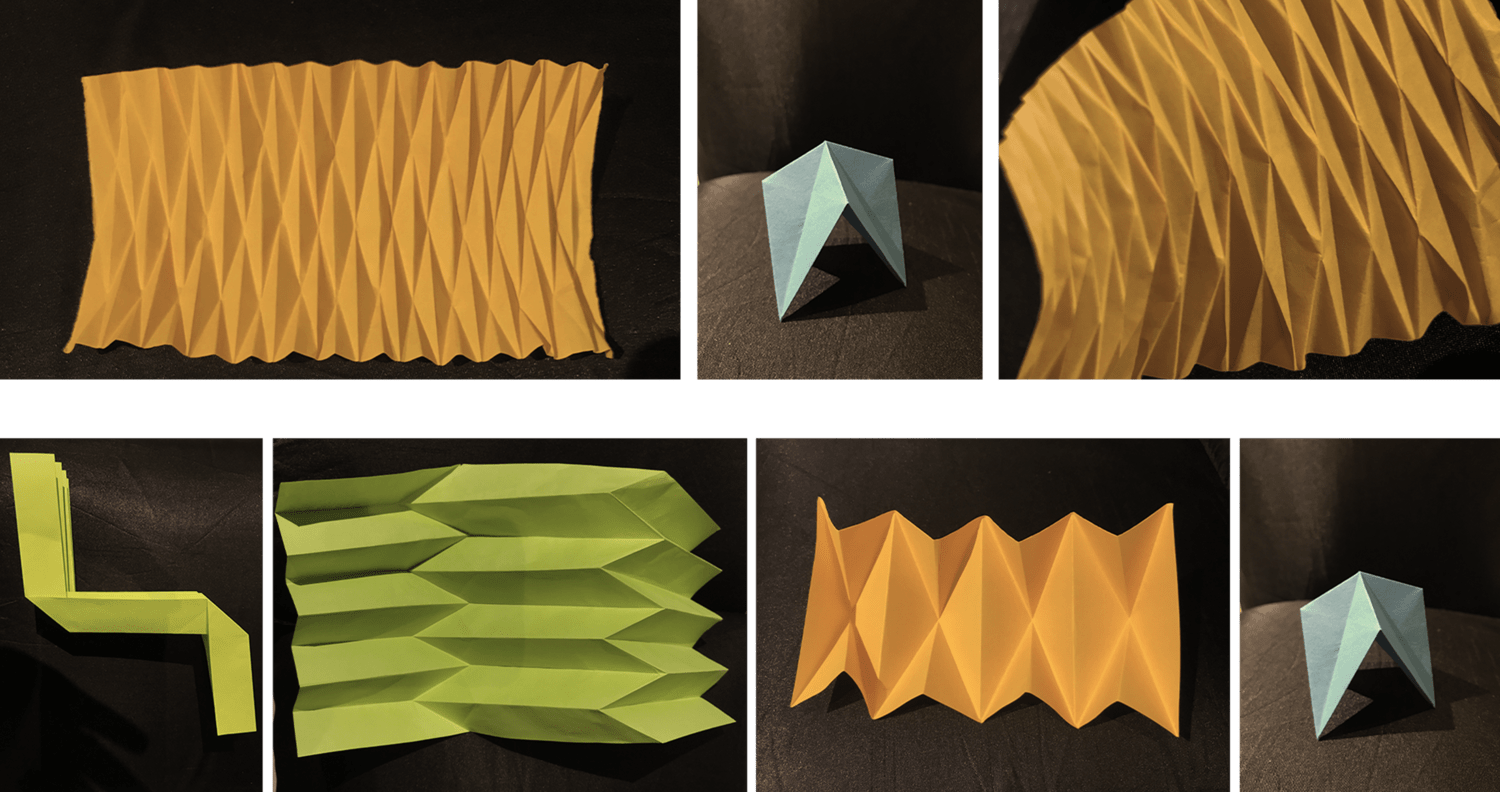
Problem Statement
To understand the importance of space, material, and water management in creating an indoor garden.
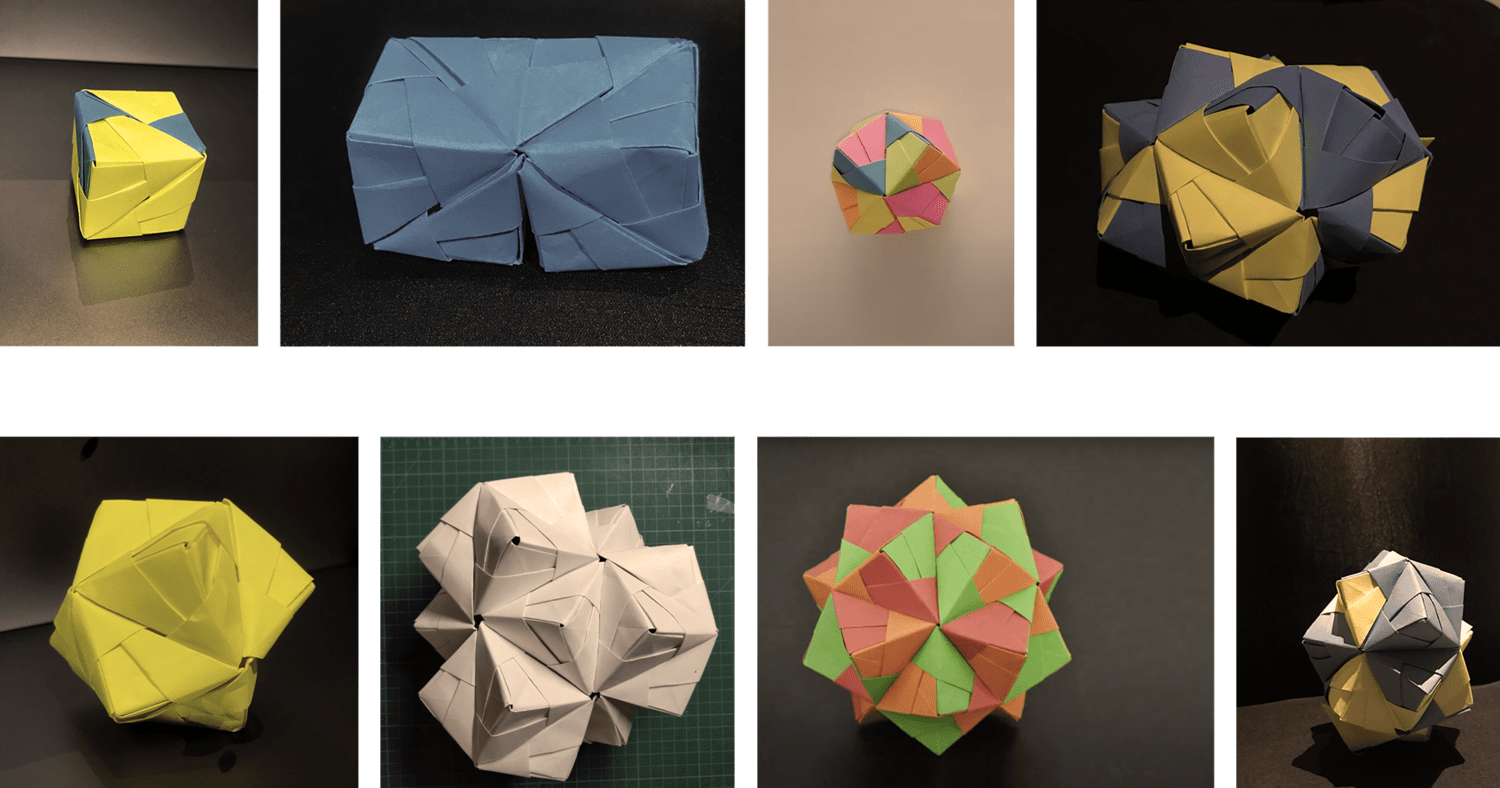
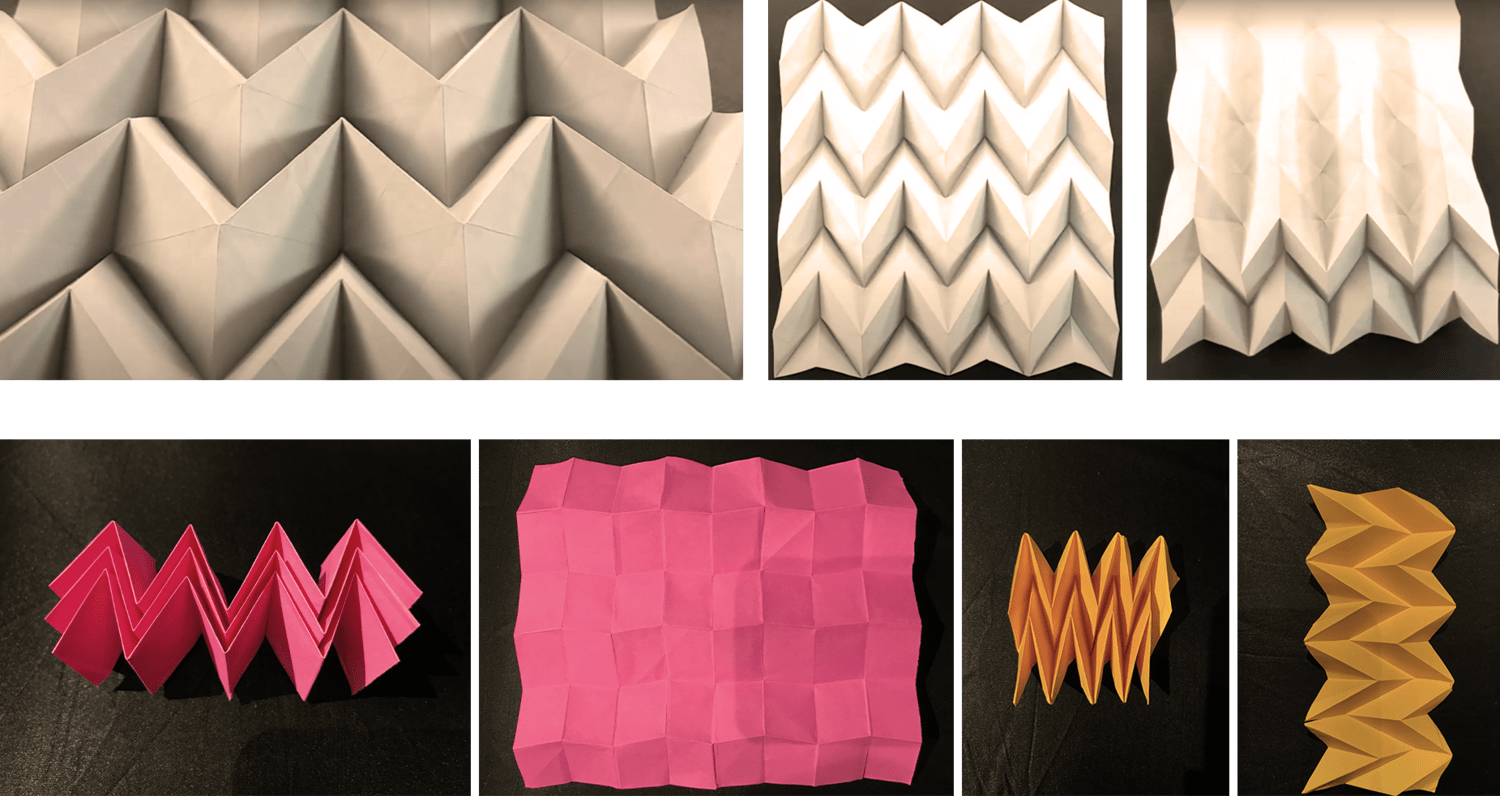
Understanding Soil
We started by exploring the various types of soils and composts available in the market. Tried to understand the types of pots and planters that use these soils and what is the basic composition of good soil.
Understanding the Use of Each Element Selected
Soybean – Contains amino acids
Grass – Decrease the requirement fertilizer
Leaves – Recycles nutrients back to the soil
Coir – Makes the compost light and yet is packed in nutrients
Kitchen Waste – Contains high quantities of nitrogen and is also known as wet or green waste.
Cow-dung Cakes – Improves the moisture holding capacity
Turmeric – Works as a pest repellent
Silt – Increases fertility and contains many minerals
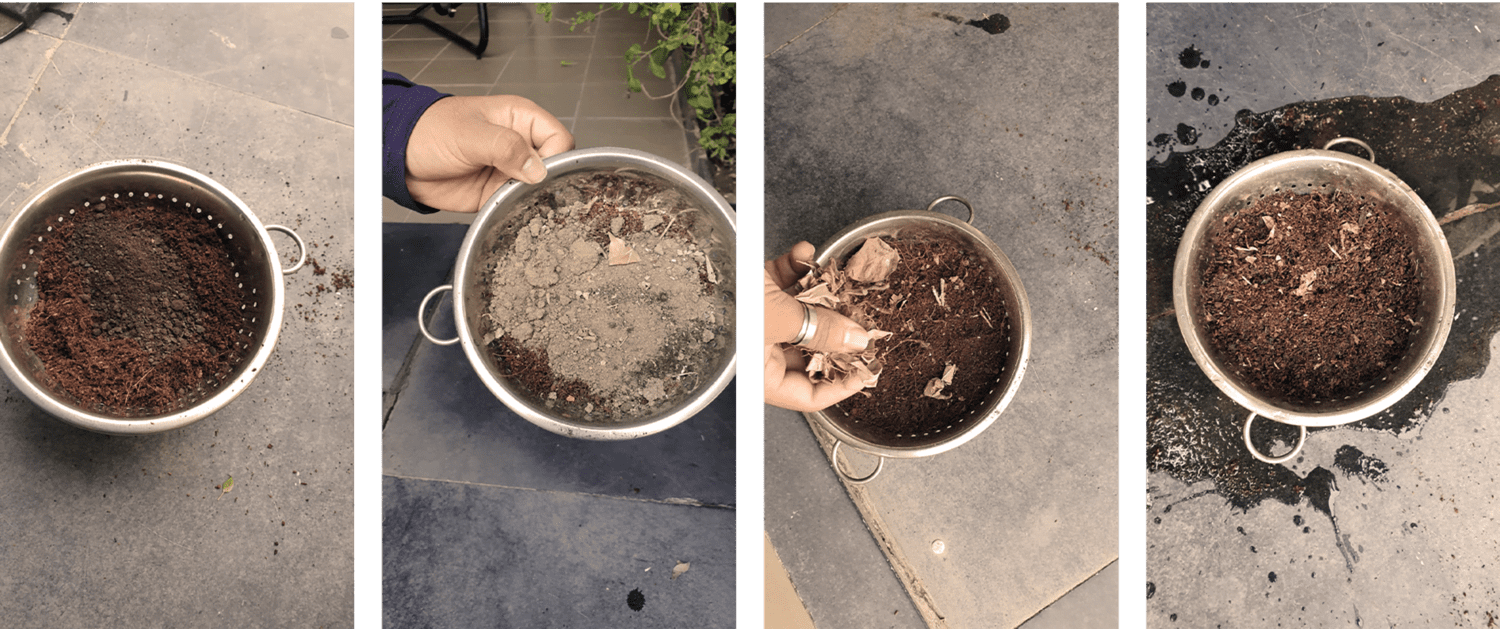
Prototyping Compost Compositions
The composition of soil had to achieve three important parameters. The soil had to be rich in nutrients, lightweight and water retentive. We used various compositions of the aforementioned materials, various molds, and various weights to make the soil light and compact.
Ideation on Shapes and Process
The final soil composition prototype was taken to various industrial processes to create a compact soil structure. A modular structure can be created using three processes, cold press, hot press, and no press.
The final choice we chose was a hot press. This made the soil lightweight, compact, and nutrient-dense.
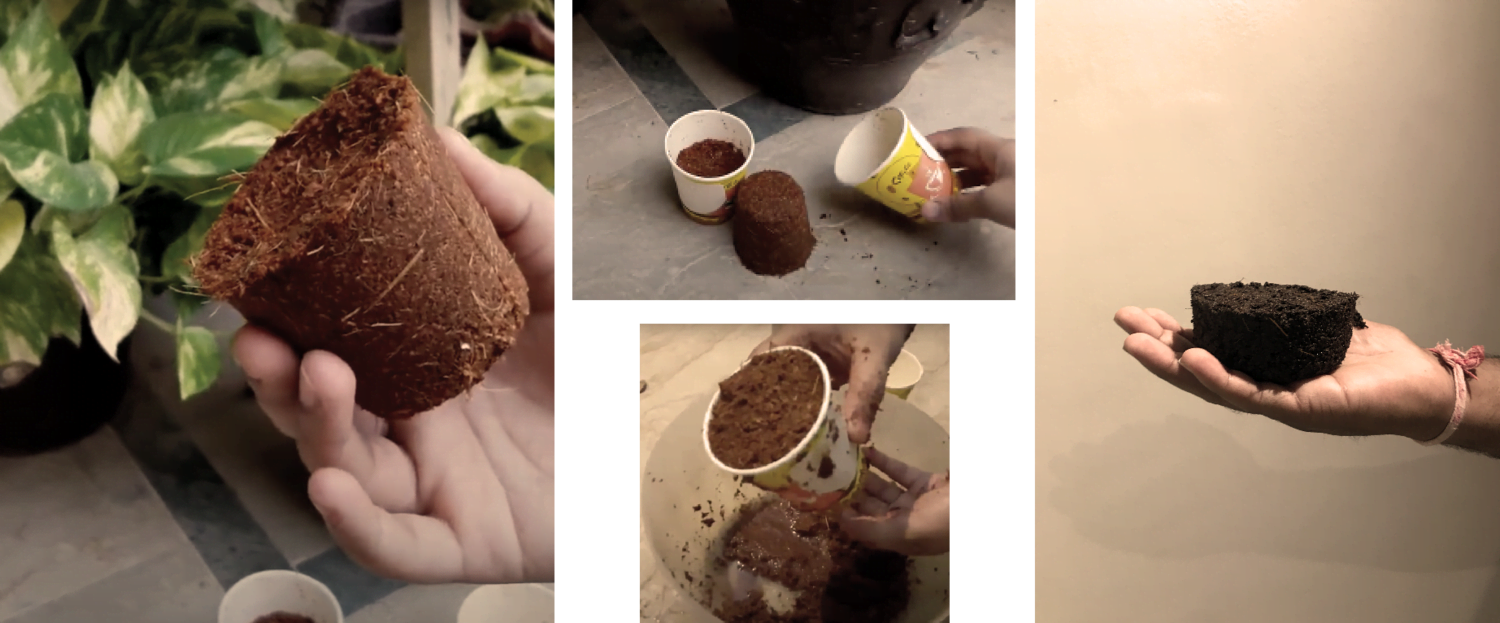
Ideation Usage
These compact soil modules can be used to create gardens in apartments, patios, gazebo rooftops, indoor gardens, hanging gardens, and so on and so forth.
Prototype
We created a Sketchup model to designate the use case scenario. The visualization of a backyard courtyard of an apartment complex. The lack of gardens is a serious concern in most urban Indian complexes. To solve this we created a virtual prototype.
